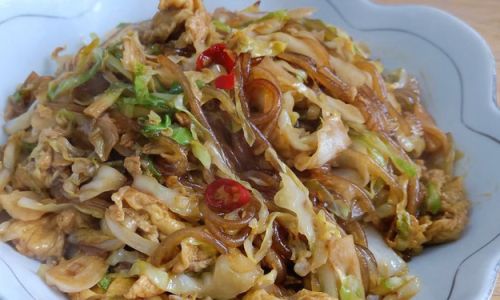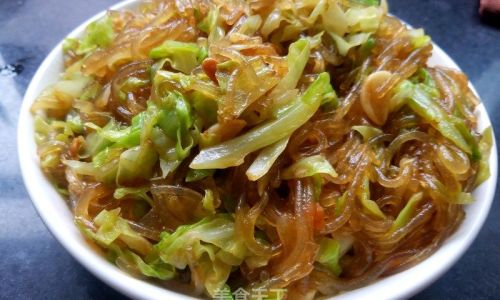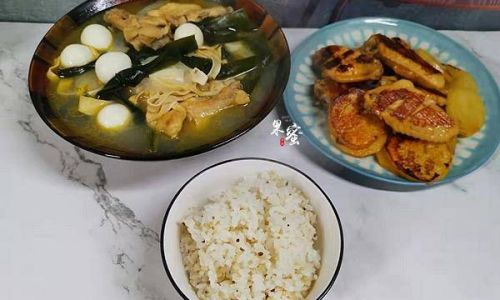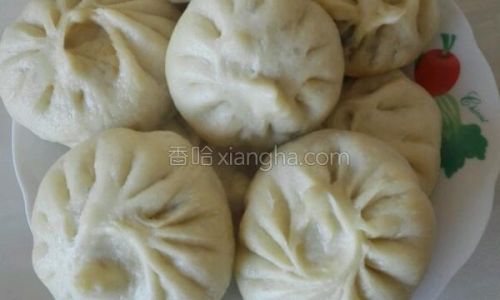Table of content
Cabbage stir-fry with vermicelli, a dish beloved in many Asian cuisines, combines the crisp texture of cabbage with the silky softness of glass noodles, creating a harmony of flavors and textures that is both satisfying and comforting. This versatile recipe can be adapted to suit various dietary preferences, from vegetarian to meat-inclusive, making it a staple in households worldwide. Whether you’re a seasoned home cook or a novice in the kitchen, this guide will walk you through every step to achieve a restaurant-quality dish that bursts with umami and freshness.
The Allure of Cabbage and Vermicelli
Cabbage, a humble yet nutritious vegetable, is rich in fiber, vitamins, and antioxidants. Its mild, slightly sweet flavor makes it an ideal canvas for absorbing aromatic seasonings, while its crunch adds a refreshing contrast to softer ingredients. Vermicelli, also known as glass noodles or cellophane noodles, is made from mung bean starch or sweet potato starch. When cooked, it becomes translucent and chewy, absorbing the flavors of the dish it’s paired with. Together, cabbage and vermicelli create a balanced meal that is light yet filling, perfect for lunch or dinner.

Ingredients: Building the Foundation of Flavor
To embark on this culinary journey, gather the following ingredients. Precision in measurements ensures harmony in the final dish, but feel free to adjust quantities based on personal taste.
For the Base:
- 400g (14 oz) fresh cabbage (green or purple, thinly sliced)
- 100g (3.5 oz) dried vermicelli noodles
- 2 tablespoons vegetable oil (peanut, sesame, or canola oil work best)
- 3 garlic cloves (minced)
- 1-inch ginger (grated)
- 1 small onion (thinly sliced)
- 2-3 dried red chilies (optional, for heat)
For the Sauce:
- 3 tablespoons soy sauce (light soy for saltiness, dark soy for color)
- 1 tablespoon oyster sauce (or vegetarian oyster sauce for a plant-based version)
- 1 teaspoon sugar (brown or white)
- 1/2 teaspoon white pepper
- 1/4 cup water or vegetable broth
Optional Additions:
- 100g (3.5 oz) ground pork, chicken, or tofu (crumbled)
- 1 carrot (julienned)
- 1/2 bell pepper (thinly sliced)
- 2-3 shiitake mushrooms (rehydrated and sliced)
- 1 tablespoon rice vinegar (for brightness)
- 1 teaspoon sesame oil (for finishing)
- Fresh cilantro or green onions (chopped, for garnish)
Step-by-Step Preparation: From Prep to Plate
Preparing the Vermicelli
Dried vermicelli noodles require soaking before cooking. Place the noodles in a large heatproof bowl and pour boiling water over them. Let them soak for 8-10 minutes, or until pliable but not mushy. Drain and rinse under cold water to prevent sticking. Use kitchen scissors to cut the noodles into shorter lengths for easier stir-frying.
Pro Tip: Overcooking vermicelli can lead to a gummy texture. Test a strand by pinching it—it should bend without breaking but retain some firmness.
Prepping the Cabbage and Vegetables
Remove the outer leaves of the cabbage and discard any wilted ones. Slice the cabbage into thin shreds, about 1/4-inch wide. For added visual appeal, separate the leaves into green and white portions if using green cabbage. Julienne the carrot and slice the bell pepper into thin strips. Set all vegetables aside in separate bowls to streamline the cooking process.
Aromatics: The Flavor Base
Heat the vegetable oil in a wok or large skillet over medium-high heat. Once the oil shimmers, add the minced garlic, grated ginger, and sliced onion. Sauté for 1-2 minutes until fragrant and golden. For a spicy kick, add dried red chilies at this stage, stirring constantly to avoid burning.

Key Technique: High heat is crucial for stir-frying. Maintain a lively sizzle to caramelize the aromatics without steaming them, which would result in a dull flavor.
Cooking the Protein (If Using)
If adding meat or tofu, push the aromatics to one side of the wok and increase the heat to high. Add the protein to the empty space, breaking it into small pieces with a spatula. Stir-fry for 3-4 minutes until cooked through. For ground meat, ensure it’s fully browned; for tofu, aim for a golden crust.
Vegetarian Variation: Skip the protein or use crumbled tempeh for a fermented twist.
Stir-Frying the Cabbage
Add the cabbage to the wok, tossing gently to combine with the aromatics and protein. Stir-fry for 4-5 minutes until the cabbage wilts slightly but retains its vibrant color. Overcooking will diminish its crunch, so aim for a tender-crisp texture.
Tip: If the wok becomes dry, splash a tablespoon of water or broth to create steam and prevent burning.
Incorporating the Vermicelli and Sauce
Lower the heat to medium and add the soaked vermicelli to the wok. Pour the prepared sauce over the noodles, using tongs to distribute it evenly. Gently toss the mixture to ensure the noodles are coated without breaking them. Cook for 2-3 minutes until the noodles absorb the sauce and soften further.
Adjustment: If the dish seems dry, add a splash of broth; if too wet, increase the heat slightly to evaporate excess liquid.
Final Touches and Seasoning
Taste the dish and adjust seasonings as needed. Add a drizzle of sesame oil for nutty depth, a splash of rice vinegar for acidity, or a pinch of sugar to balance saltiness. Fold in any optional vegetables, such as bell peppers or mushrooms, and cook for an additional minute until just tender.

Garnish: Sprinkle with chopped cilantro, green onions, or toasted sesame seeds for a pop of color and freshness.
Tips for Perfecting the Dish
- Uniformity in Cutting: Slice vegetables and protein into evenly sized pieces to ensure even cooking.
- Wok Height: Use a wok or a wide skillet with sloped sides to facilitate tossing and prevent ingredients from steaming.
- Sauce Consistency: Adjust the sauce ratio based on personal preference. For a drier dish, use less liquid; for saucier noodles, add an extra tablespoon of broth.
- Heat Control: Mastering high-heat stir-frying is essential. Preheat the wok thoroughly to avoid sticking and ensure a smoky, charred flavor.
Creative Variations to Explore
- Spicy Sichuan Style: Add Sichuan peppercorns and doubanjiang (chili bean paste) to the aromatics for a numbing, spicy kick.
- Seafood Twist: Incorporate shrimp or squid during the protein step for a briny flavor.
- Vegan Delight: Use mushroom-based oyster sauce and skip the meat, adding extra vegetables like snap peas or baby corn.
- Noodle Swap: Substitute vermicelli with rice noodles or egg noodles for a different texture.
Serving Suggestions
Cabbage stir-fry with vermicelli pairs beautifully with:
- Steamed jasmine rice or quinoa for a heartier meal.
- A side of pickled vegetables (such as daikon or cucumber) for acidity.
- A crisp lager or green tea to cleanse the palate.
- As a standalone dish, garnished with a fried egg for protein.
Health Benefits: Nutrition Meets Flavor
This dish is a nutritional powerhouse. Cabbage is low in calories but high in fiber, vitamins C and K, and antioxidants linked to reduced inflammation. Vermicelli, while a carbohydrate source, is gluten-free and easier to digest than wheat-based noodles. The dish’s minimal oil content and abundance of vegetables make it a guilt-free indulgence.
Troubleshooting Common Issues
- Soggy Noodles: Ensure the vermicelli is properly drained and not over-soaked. Stir-fry on high heat to evaporate excess moisture.
- Bland Flavor: Amplify the sauce with an extra teaspoon of soy sauce or a splash of fish sauce. Add a pinch of MSG (optional) for umami depth.
- Burnt Aromatics: Reduce heat if the garlic or ginger begins to brown too quickly. Prep all ingredients in advance to avoid overcooking.
Conclusion: A Dish for Every Occasion
Cabbage stir-fry with vermicelli is more than a meal—it’s a testament to the beauty of simplicity. With minimal ingredients and maximum flavor, it bridges cultural divides and satisfies cravings for comfort food. Whether you’re cooking for a busy weeknight dinner or impressing guests at a gathering, this recipe is a reliable ally. Experiment with add-ins, adjust seasonings to taste, and savor the joy of creating a dish that nourishes both body and soul.
As you master this recipe, remember that cooking is an art of intuition. Trust your palate, embrace imperfections, and let the sizzle of the wok guide you. Bon appétit!





0 comments